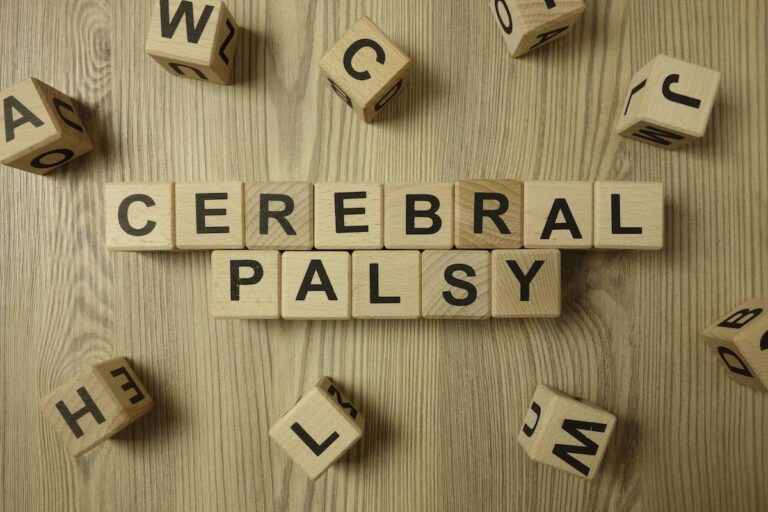
Call 24/7 for a FREE case evaluation
Call now (866) 393-4334

$100,000,000
in California case results
$20,000,000
in California jury verdicts
14
award-winning attorneys in network

Massage therapy is centered on manual manipulation of muscles, ligaments, connective tissue and tendons, the body’s soft tissue. Massage methods vary and the therapy is used to achieve a number of goals.
Participating eases stress and anxiety, supporting physical and emotional well-being. The practice can be broken into two fundamental types of massage:
For cerebral palsy patients, massage serves as an important adjunct to other treatment, particularly physical therapy, which is concerned with some of the same body structures. Through direct contact stimulation, massage therapists strive to improve muscle functionality and enhance quality of life for CP patients.
As a proven form of complementary medicine, massage therapy has many benefits. It has been shown to reduce stress, pain and muscle tension, and may also help with these conditions:
Cerebral palsy presents wide-ranging symptoms, so comprehensive management of the disorder includes several forms of intervention. Massage therapy serves as complementary treatment, reinforcing the benefits of physical therapy, occupational therapy and other CP care. Benefits of massage therapy extend beyond physical structures, supporting a healthy mind, body and soul.
Massage contributes to balanced state of mind and is thought to enhance focus. According to studies cited by the American Massage Therapy Association (AMTA), massage therapy can help:
The positive impacts of therapeutic massage may also reduce the effect of attention-deficit disorders, helping young cerebral palsy patients excel academically and keep pace with school curricula.
The physical benefits of massage are not limited to the musculoskeletal system. Various massage techniques also enhance circulatory and lymphatic functions, moving blood and releasing toxins. Massage can also promote respiratory health.
Massage therapy improves range of motion, in some cases and relaxes muscles. It can also have a positive effect on posture, reinforcing healthy structure and movement. Dozens of variations target particular muscle groups, maximizing the therapeutic value of massage among those with CP.
As part of a holistic regimen, massage therapy reinforces physical, emotional and spiritual well-being. Massage techniques are performed in relaxing settings, lifting stress and encouraging healing and balance.
Massage therapy is targeted manipulation of soft body tissue. The therapy uses manual stimulation to apply pressure or friction, and move muscles and tissue. Dozens of massage variations are directed at particular parts of the body, addressing the needs of each subject. Massage provides benefits in these areas:
Massage therapists apply pressure over the skin to achieve various results. Using their hands, fingers, elbows, forearms, knees and mechanic aids, therapists utilize assorted massage methods to improve outcomes for CP patients. Therapy may include these and other techniques:
Massage therapists sometimes utilize manual and mechanical aids to maximize the benefits of CP therapy. The special equipment and materials reinforce results and add to the positive physical and psychological contributions of massage therapy.
Massage therapy has widespread benefits for children with cerebral palsy. In addition to physical gains, cerebral palsy patients participating in therapeutic massage may experience emotional and psychological improvements. Medical massage may be recommended to:
In practice, massage therapists may use multiple techniques to achieve the desired results. Deep tissue procedures are most beneficial for chronic muscle problems associated with cerebral palsy. In contrast to various forms of relaxation massage, deep tissue therapy uses slow, deliberate strokes to release chronic tension.
By applying pressure or friction against the grain of the muscle and reaching deeper layers of tissue, massage therapists effectively reduce stiffness and spasticity experienced by children with cerebral palsy.
The positive effects of therapeutic massage are not limited to surface musculature. On the contrary, massage can yield positive gains across the body’s organs and major systems. Massage therapy can provide benefits to the following systems:
Relaxation massage is conducted at sports clubs, health facilities, spas, resorts and by in-home appointment. Retail establishments (malls, outlet centers) also host massage stations, and some employers contract massage services to be conducted in occupational settings. Goals for this form of massage, sometimes called Swedish massage, are somewhat different than those of medical massage.
Therapeutic or clinical massage is more likely to be conducted in a medical setting, such as a chiropractor’s office, hospice, health clinic or physical therapy facility.
Massage therapists receive training through hundreds of existing educational programs across the U.S. Organizations like the Commission on Massage Therapy Accreditation (COMTA) provide voluntary peer review, giving institutions and massage therapy programs the opportunity to earn a national endorsement. To receive accreditation, programs must exhibit high standards and follow particular protocols deemed appropriate for recognition.
The National Certification Board for Therapeutic Massage and Bodywork (NCBTMB) issues a national credential for massage therapy. Nationally certified practitioners are now invited to gain Board Certification, a new endorsement representing 750 hours of schooling and at least 250 hours hands-on, professional experience.
Most states regulate the practice through licensure or other accountability measures, resulting in credentials such as:
Massage therapy is a specialized practice. Relaxation massage and medical, deep tissue massage can provide myriad benefits, ranging from a heightened sense of well-being, to a host of physical improvements. Specialists are trained and licensed, ensuring consistency across the field, but massage therapists do not:
Most people are not at risk undergoing conventional massage. However, massage may not be recommended when certain conditions are present. Massage is not appropriate for patients experiencing these and other complaints:
Before settling on therapeutic massage, parents and caregivers should discuss its benefits with the child’s pediatrician and therapy team. Further collaboration with physical therapists familiar with the child’s needs maximizes positive outcomes.
WE’RE OPEN NOW
Our staff are standing by to help you find the perfect attorney for your case.
